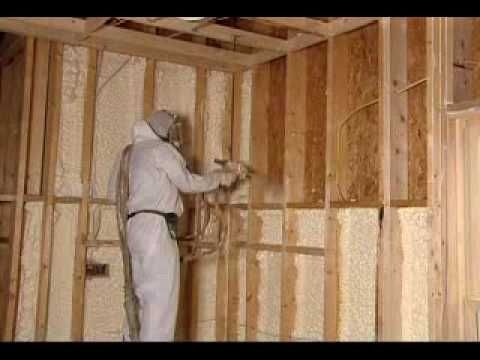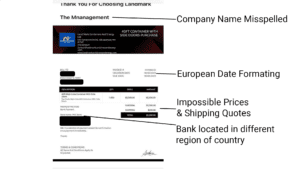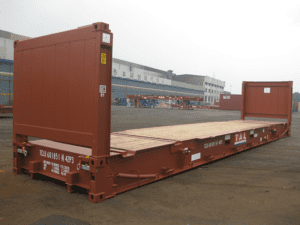Welcome to our comprehensive guide on insulation methods! Insulation is a crucial aspect of creating energy-efficient, comfortable living and working spaces. Whether you’re looking to insulate your home, office, or even a cargo container, understanding the various insulation methods available is key to making an informed decision. In this guide, we’ll explore the different types of insulation materials, their applications, and how they can help you achieve the perfect balance between thermal performance, cost-effectiveness, and sustainability.
Choosing the Right Container
Before we dive into the world of insulation, it’s essential to select the right container for your project. To help you make an informed decision, check out our previous blog post on picking the right cargo container size. With the perfect container in place, you’ll be ready to learn about the best insulation methods to suit your unique needs. So, let’s get started on your journey to a well-insulated and energy-efficient space!
Spray Foam Insulation
Pros:
- Excellent thermal performance
- Fills gaps and hard-to-reach areas
- Creates an air and moisture barrier
- Helps prevent condensation and mold growth
Cons:
- Requires professional installation
- Relatively expensive
FAQ: How do you insulate cargo containers with spray foam insulation? A professional installer will apply the spray foam insulation directly to the container’s interior walls, expanding and hardening to create an airtight seal.
Blanket Insulation
Pros:
- Affordable and widely available
- Moderate level of thermal resistance and soundproofing
- Easy to install
Cons:
- May not offer the same level of moisture protection as spray foam insulation
- Requires a separate vapor barrier to prevent moisture infiltration
FAQ: What insulation to use for shipping containers when choosing blanket insulation? Both fiberglass and mineral wool are suitable options, depending on your budget and preference. Make sure to add a vapor barrier to enhance moisture protection.
Rigid Foam Insulation
Pros:
- Excellent thermal resistance and moisture protection
- Lightweight and easy to cut
- Can be installed by DIY enthusiasts or professionals
Cons:
- More expensive than blanket insulation
- Requires careful installation to ensure a proper seal
FAQ: What is the best and cheapest way to insulate a shipping container with rigid foam insulation? Expanded polystyrene (EPS) panels are generally the most cost-effective option among rigid foam insulation types.
Insulated Panels
Pros:
- Excellent thermal performance
- Provides additional structural strength
- Suitable for conversions that require extra support
Cons:
- More expensive than other insulation options
- May require professional installation
FAQ: Should you insulate the inside or outside of a shipping container with insulated panels? Insulating the inside of a shipping container is more common, as it protects the insulation from weather and damage. However, insulating the exterior is also an option if you need to maximize interior space.
Eco-friendly Insulation
Pros:
- Good thermal resistance
- Made from renewable or recycled sources
- Lower environmental impact
Cons:
- More expensive initially
- May require additional moisture protection
FAQ: What is the best way to insulate a cargo container with eco-friendly insulation? Each eco-friendly insulation material has its benefits. Sheep’s wool has excellent natural moisture-regulating properties, while cellulose insulation is made from recycled paper products and offers a high R-value. Recycled denim insulation is made from post-consumer denim waste and provides good thermal and acoustic performance.
Additional FAQ
Q: How do you keep a shipping container from condensating?
A: To prevent condensation in a shipping container, use proper insulation, install a vapor barrier, and ensure good ventilation. This combination will help regulate temperature and moisture levels inside the container.
Q: What absorbs moisture in a container?
A: Desiccant materials, such as silica gel or calcium chloride, can be used to absorb excess moisture in a container. These can be placed in small containers or bags within the cargo container to help maintain a dry environment.
Q: What is the best way to ventilate a shipping container?
A: Installing vents, such as louvered vents, on opposite sides of the container can promote cross-ventilation and help remove excess moisture. Additionally, using a solar-powered or electric fan can help improve air circulation within the container.
Q: What keeps moisture out of containers?
A: Proper insulation, a vapor barrier, and good ventilation all work together to keep moisture out of shipping containers. Choosing the right insulation method and ensuring a tight seal will help protect your container from moisture infiltration.
Conclusion
Choosing the best insulation method for your cargo container is essential for creating a comfortable, energy-efficient, and durable space. Factors such as your budget, desired thermal performance, and environmental impact should all be considered when selecting the right insulation type. By understanding the benefits and drawbacks of each insulation method and considering the frequently asked questions, you can make an informed decision that best suits your needs and helps transform your used cargo container into a functional and cozy space.




